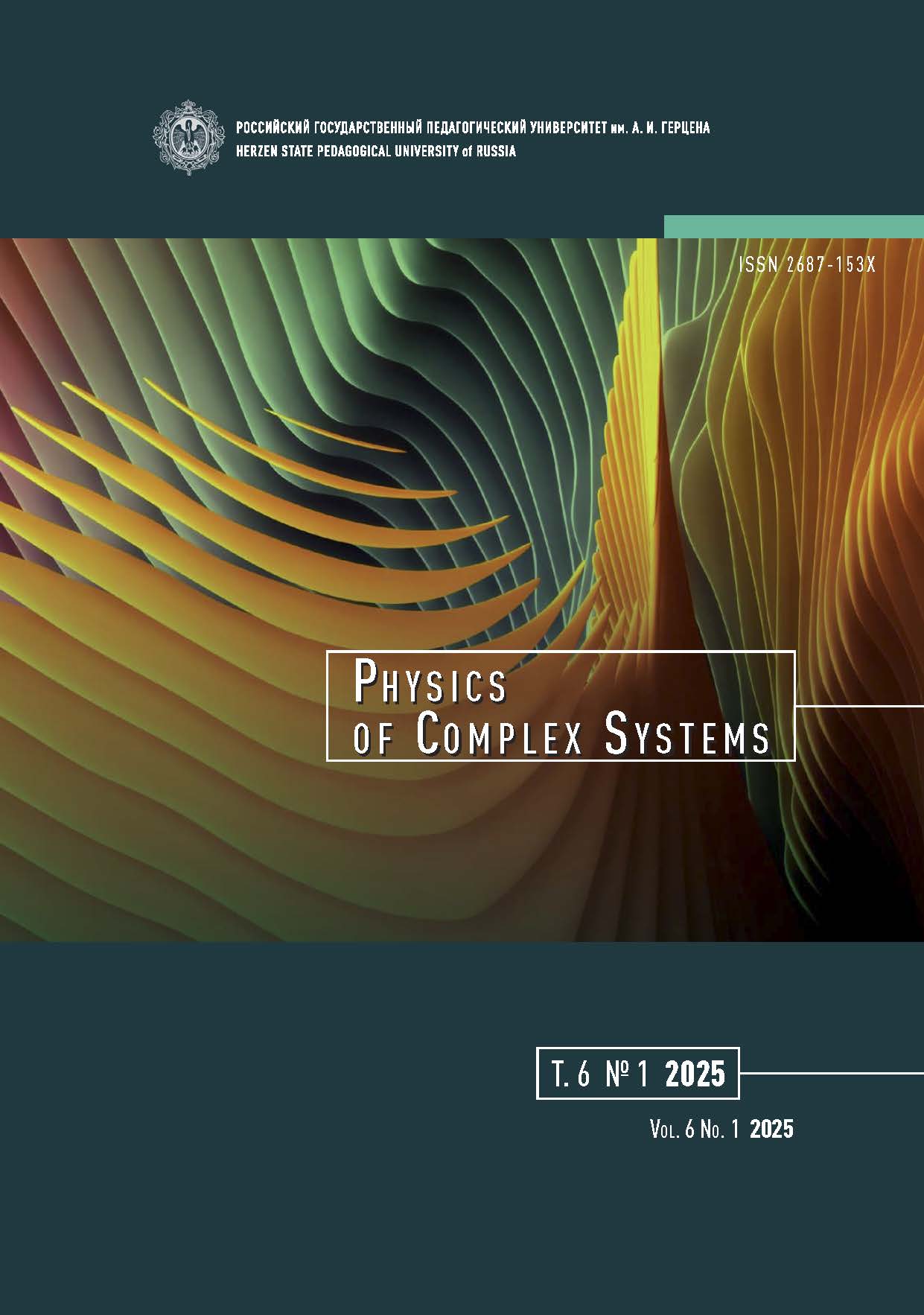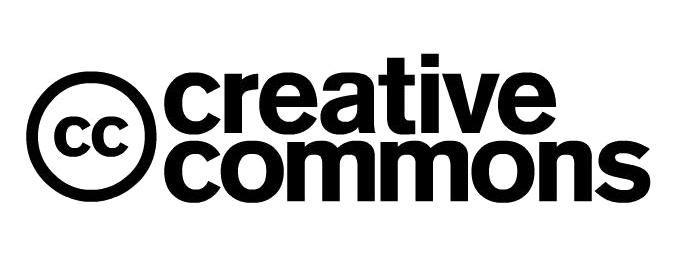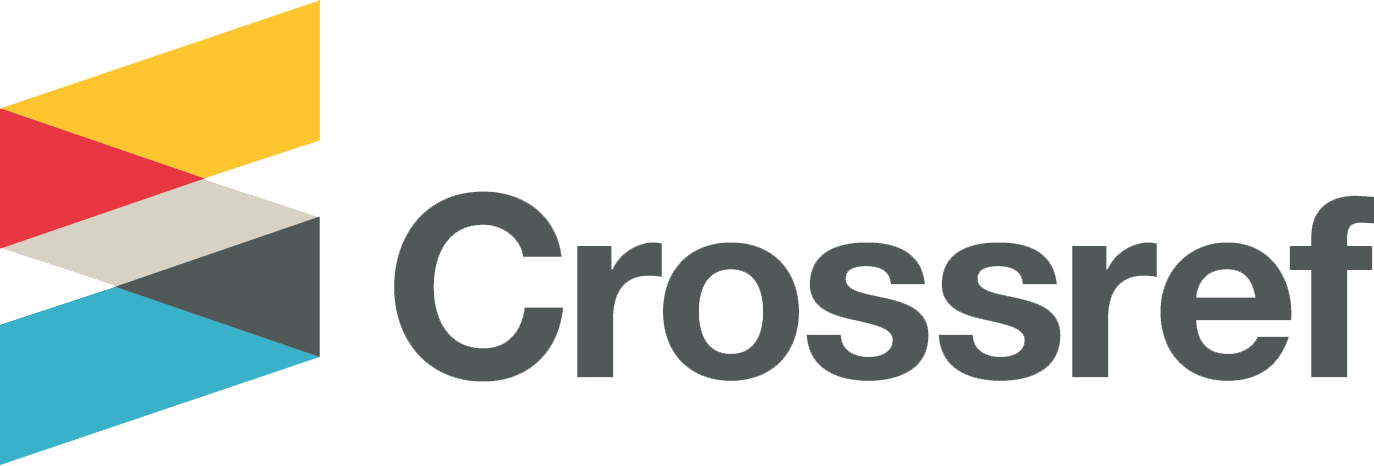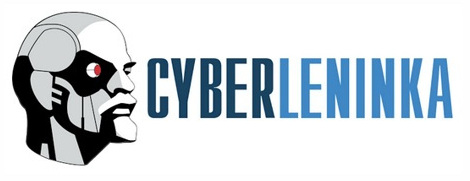Механизм транспорта заряда в органической пленке на основе фторированного полиарилового эфира, содержащего блоки в цепи 1,4-диоксо-тиоксантен-9-она
DOI:
https://doi.org/10.33910/2687-153X-2025-6-1-9-16Ключевые слова:
фторированные полимеры, транспорт заряда, мемристор, ловушка, фотолюминесценция, спектры возбуждения фотолюминесценцииАннотация
На основе перфторбифенила и 1,4-дигидрокси-9H-тиоксантен-9-она был синтезирован новый термостабильный полиарилэфир (FPAE-ThS) с электроноакцепторным тиоксантеноновым фрагментом в составе полимерной цепи. Механизм транспорта заряда в FPAE-ThS пленке описывается фонон-облегченным туннелированием между ловушками. Определены термическая (1.0 eV) и оптическая (2.0 eV) энергии ионизации ловушек и концентрация ловушек (N=1.0×1020 cm–3). Половина значения Стоксового сдвига (1,1 эВ), полученного из спектров фотолюминесценции и спектров возбуждения фотолюминесценции, соответствует результатам моделирования транспорта заряда. Показано, что модельное запоминающее устройство на основе пленки FPAE-ThS обладает резистивными переключениями с разницей в сопротивлении на 4 порядка между состояниями мемристора с низким и высоким сопротивлением.
Библиографические ссылки
Dunlap, D. H., Parris, P. E., Kenkre, V. M. (1996) Charge-dipole model for the universal field dependence of mobilities in molecularly doped polymers. Physical Review Letters, 77, article 542. https://doi.org/10.1103/PhysRevLett.77.542 (In English)
Frenkel, J. (1938) On pre-breakdown phenomena in insulators and electronic semi-conductors. Physical Review, 54, 647–648. https://doi.org/10.1103/PhysRev.54.647 (In English)
Ganichev, S. D., Ziemann, E., Prettl, W. et al. (2000) Distinction between the Poole-Frenkel and tunneling models of electric-field-stimulated carrier emission from deep levels in semiconductors. Physical Review B, 61, 10361–10365. https://doi.org/10.1103/PhysRevB.61.10361 (In English)
Gismatulin, A. A., Odintsov, D. S., Shundrina, I. K. et al. (2024) Charge transport mechanism and trap origin in methyl methacrylate copolymer with thioxanthenone side groups. Chemical Physics Letters, 840, article 141140. https://doi.org/10.1016/j.cplett.2024.141140 (In English)
Gritsenko, V. A., Perevalov, T. V., Voronkovskii, V. A. et al. (2018) Charge transport and the nature of traps in oxygen deficient tantalum oxide. ACS Applied Materials & Interfaces, 10, 3769−3775. https://doi.org/10.1021/acsami.7b16753 (In English)
Hirao, A., Nishizawa, H., Sugiuchi, M. (1995) Diffusion and drift of charge carriers in molecularly doped polymers. Physical Review Letters, 75, 1787–1790. https://doi.org/10.1103/PhysRevLett.75.1787 (In English)
Jiang, X., Yin, J. (2014a) Copolymeric photoinitiators containing in-chain thioxanthone and coinitiator amine for photopolymerization. Journal of Applied Polymer Science, 94, 2395–2400. https://doi.org/10.1002/app.21178 (In English)
Jiang, X., Yin, J. (2014b) Polymeric photoinitiator containing in-chain thioxanthone and coinitiator amines. Macromolecular Rapid Communications, 25, 748–752. https://doi.org/10.1002/marc.200300270 (In English)
Kronemeijer, A. J., Pecunia, V., Venkateshvaran, D. et al. (2014) Two-dimensional carrier distribution in top-gate polymer field-effect transistors: correlation between width of density of localized states and Urbach energy. Advanced Materials, 26, 728–733. https://doi.org/10.1002/adma.201303060 (In English)
Kumar, M., Pereira, L. (2020) Towards highly efficient TADF yellow-red OLEDs fabricated by solution deposition methods: Critical influence of the active layer morphology. Nanomaterials, 10 (1), article 101. https://doi.org/10.3390/nano10010101 (In English)
Loskutov, V. A., Beregovaya, I. V. (2009) Reaction of thiosalicylic acid with 1,4-quinones and cyclization of the resulting arylsulfanylbenzoic acids. Russian Journal of Organic Chemistry, 45, 1405–1409. https://doi.org/10.1134/S1070428009090152 (In English)
Nasyrov, K. A., Gritsenko, V. A. (2011) Charge transport in dielectrics via tunneling between traps. Journal of Applied Physics, 109, article 093705. https://doi.org/10.1063/1.3587452 (In English)
Nasyrov, K. A., Gritsenko, V. A. (2013) Transport mechanisms of electrons and holes in dielectric films. Physics Uspekhi, 56, 999–1012. https://doi.org/10.3367/UFNe.0183.201310h.1099 (In English)
Nazir, R., Balciunas, E., Buczynska, D. et al. (2015) Donor–acceptor type thioxanthones: Synthesis, optical properties, and two-photon induced polymerization. Macromolecules, 48, 2466–2472. https://doi.org/10.1021/acs.macromol.5b00336 (In English)
Neumann, M. G., Gehlen, M. H., Encinas, M. V. et al. (1997) Photophysics and photoreactivity of substituted thioxanthones. Journal of the Chemical Society, Faraday Transactions, 93, 1517–1521. https://doi.org/10.1039/A607264J (In English)
Novikov, S. V., Dunlap, D. H., Kenkre, V. M. et al. (1998) Essential role of correlations in governing charge transport in disordered organic materials. Physical Review Letters, 81, article 4472. https://doi.org/10.1103/PhysRevLett.81.4472 (In English)
Odintsov, D. S., Shundrina, I. K., Gismatulin, A. A. et al. (2022) Heat-resistant polyimides with electron-acceptor pendant groups of the thioxanthenone series for resistive storage devices with a low switching voltage. Journal of Structural Chemistry, 63, 1811–1819. https://doi.org/10.1134/S0022476622110117 (In English)
Odintsov, D. S., Os’kina, I. A., Irtegova, I. G. et al. (2023) Electrochemical reduction of 1H-thioxanthene-1,4,9-trione and 3-methyl-1H-thioxanthene-1,4,9-trione—representatives of a new class of heterocycles related to thioxanthenone. European Journal of Organic Chemistry, 26 (33), article e202300459. https://doi.org/10.1002/ejoc.202300459 (In English)
Schroeder, H. (2015) Poole-Frenkel-effect as dominating current mechanism in thin oxide films — an illusion?! Journal of Applied Physics, 117, article 215103. https://doi.org/10.1063/1.4921949 (In English)
Shaposhnik, P. A., Zapunidi, S. A., Shestakov, M. V. et al. (2020) Modern bio and chemical sensors and neuromorphic devices based on organic semiconductors. Russian Chemical Reviews, 89, 1483–1506. https://doi.org/10.1070/rcr4973 (In English)
Vasilieva, N. V., Irtegova, I. G., Loskutov, V. A. et al. (2012) Redox properties and radical anions of 2-substituted thioxanthen-9-ones and their 2-methyl S-oxide derivatives. Mendeleev Communications, 23 (6), 334–336. https://doi.org/10.1016/j.mencom.2013.11.010 (In English)
Wang, H., Xie, L., Peng, Q. et al. (2014) Novel thermally activated delayed fluorescence materials–thioxanthone derivatives and their applications for highly efficient OLEDs. Advanced Materials, 26, 5198–5204. https://doi.org/10.1002/adma.201401393 (In English)
Wang, Y., Zhu, Y., Xie, G. et al. (2018) Red thermally activated delayed fluorescence polymers containing 9H-thioxanthen-9-one-10,10-dioxide acceptor group as pendant or incorporated in backbone. Organic Electronics, 59, 406–413. https://doi.org/10.1016/j.orgel.2018.05.058 (In English)
Wu, Q., Xiong, Y., Liang, Q. et al. (2014) Developing thioxanthone based visible photoinitiators for radical polymerization. RSC Advances, 4, article 52324. https://doi.org/10.1039/C4RA07614A (In English)
Yilmaz, G., Tuzun, A., Yaggi, Y. (2010) Thioxanthone–carbazole as a visible light photoinitiator for free radical polymerization. Journal of Polymer Science. Part A: Polymer Chemistry, 48, 5120–5125. https://doi.org/10.1002/pola.24310 (In English)
Yuan, L., Liu, S., Chen, W. et al. (2021) Organic memory and memristors: From mechanisms, materials to devices. Advanced Electronic Materials, 7 (11), article 2100432. https://doi.org/10.1002/aelm.202100432 (In English)
Загрузки
Опубликован
Выпуск
Раздел
Лицензия
Copyright (c) 2025 Андрей Андреевич Гисматулин, Владимир Алексеевич Пустоваров, Данила Сергеевич Одинцов, Ирина Александровна Оськина, Инна Казимировна Шундрина, Иван Алексеевич Азаров, Леонид Анатольевич Шундрин, Владимир Алексеевич Гриценко

Это произведение доступно по лицензии Creative Commons «Attribution-NonCommercial» («Атрибуция — Некоммерческое использование») 4.0 Всемирная.
Авторы предоставляют материалы на условиях публичной оферты и лицензии CC BY 4.0. Эта лицензия позволяет неограниченному кругу лиц копировать и распространять материал на любом носителе и в любом формате в любых целях, делать ремиксы, видоизменять, и создавать новое, опираясь на этот материал в любых целях, включая коммерческие.
Данная лицензия сохраняет за автором права на статью, но разрешает другим свободно распространять, использовать и адаптировать работу при обязательном условии указания авторства. Пользователи должны предоставить корректную ссылку на оригинальную публикацию в нашем журнале, указать имена авторов и отметить факт внесения изменений (если таковые были).
Авторские права сохраняются за авторами. Лицензия CC BY 4.0 не передает права третьим лицам, а лишь предоставляет пользователям заранее данное разрешение на использование при соблюдении условия атрибуции. Любое использование будет происходить на условиях этой лицензии. Право на номер журнала как составное произведение принадлежит издателю.







